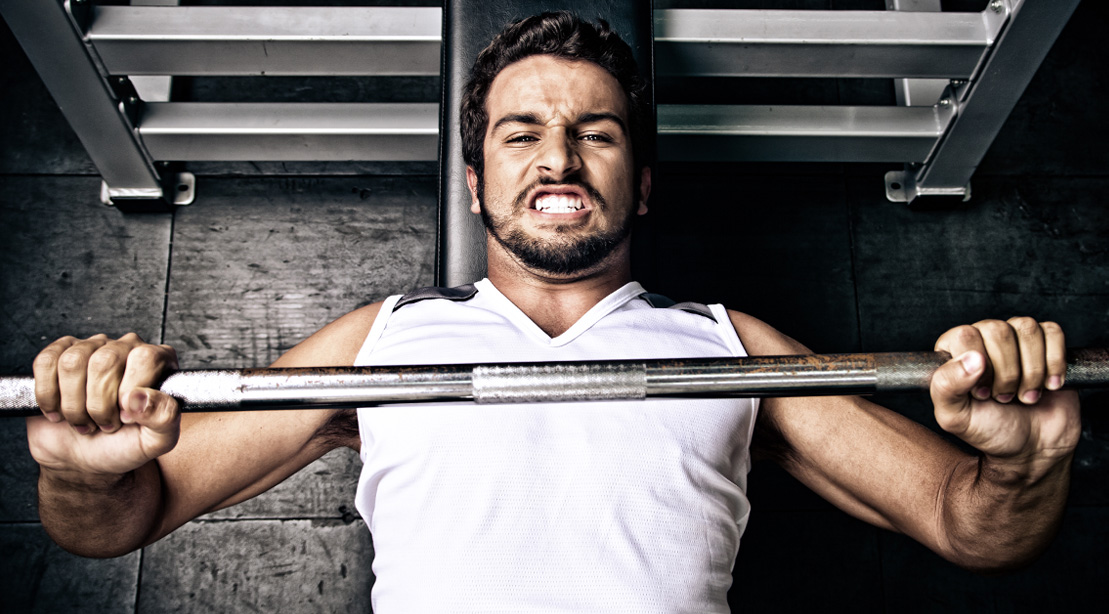The barbell bench press is the undisputed champion of international chest day, and for good reason. It builds upper-body strength, enhances your chest, shoulders, and triceps, and gives lifters that classic “how much ya bench?” bragging rights.
However, it’s not a one-size-fits-all exercise.
For some lifters, the barbell bench press can cause persistent shoulder pain or frustration due to stalled progress. Others lack the know-how or the spotter to perform it safely, but that doesn’t mean you’re doomed to a no chest and weak press.
Here, I will outline what makes the barbell bench press so effective, what to consider when looking for a substitute, and five bench press alternatives that can still build a muscular chest and pressing power, without causing pain.
What Makes The Barbell Bench Press Effective?
The barbell bench press is one of many barbell exercises that deliver results in terms of size, strength, and performance. Here’s what makes it effective:
- Compound Performance: The bench press simultaneously trains the pectorals, front delts, and triceps, making it an effective exercise for the upper body.
- You Can Load Up: The barbell allows for balanced, bilateral loading with a fixed range of motion, providing predictability, stability, and progression over time.
- Bragging rights: Whether you’re training for powerlifting, athletics, or just bragging rights, the bench press is a go-to benchmark of upper-body power. Does anyone ask you how much you row? I rest my case.
- Muscle Growth on Tap: It allows you to press from a stable position, making it a hypertrophy-friendly movement, if your upper-body joints can handle it.
That said, its fixed movement path and the shoulder stress it can cause can make it less-than-ideal for some lifters. That’s where smart alternatives come in.
What to Look For In a Good Alternative
If the barbell bench press isn’t for you or you’re looking for some variety, the goal isn’t to replace it with any chest exercise but rather to sub in a movement that provides comparable muscle and strength-building benefits. Here’s what a quality bench press alternative should deliver:
- Chest Engagement: Let’s be careful not to overlook the obvious, as a great alternative still needs to target the pecs through a full range of motion.
- Horizontal or Inclined Pressing Angle: It should mimic the movement pattern of a bench press to maintain carryover to pressing strength and size gains.
- Be Joint-Friendly: If your shoulders or wrists don’t love the barbell, a good substitute needs to offer more freedom of movement or machine-assisted stability.
- Progressive Overload Potential: If you cannot progressively overload it, it’s out
These five alternatives check all those boxes and then some. Okay, enough talk; it’s time for action.

5 Best Alternatives to the Barbell Bench Press
The barbell bench press is the granddaddy of all chest exercises, but sometimes grandpa gets grumpy and mad at you. When the barbell isn’t your friend, these five alternatives will serve you well.
Dumbbell Bench Press
The classic dumbbell bench press uses one or two dumbbells, performed on a flat bench with either a neutral or standard grip. It provides a greater range of motion and more freedom of movement than a barbell, allowing for a deeper stretch while each side works independently. This variation is excellent for correcting left-right imbalances, reducing joint strain, and achieving an impressive chest pump. Lower the dumbbells with control until your elbows are just below the level of the bench, then press them up while keeping your wrists above your elbows.
Sets & Reps: 3–4 sets of 6–15 reps
Dumbbell Floor Press
The dumbbell floor press is a variation where the floor is your bench, and it serves a couple of purposes.
- It limits the range of motion at a point where the shoulder joint becomes vulnerable.
- This variation, because of the reduced ROM, focuses on triceps and lockout strength.
- There is no assistance from your lower body, further enhancing lockout strength.
It’s ideal for lifters with shoulder issues or those who tend to overstretch in the bench press. Keep your elbows at a 45-degree angle from your torso, and pause briefly when your triceps touch the floor to eliminate momentum.
Sets & Reps: 3 sets of 6–12 reps
Incline Dumbbell Press
Okay, now we’re back on the bench with the dumbbell chest press, performed on an incline bench set at 30–45 degrees. It has all the benefits of the flat press, but it targets the upper chest and front delts more than a flat press and places the shoulders in a more natural pressing position. Keep your chin tucked and avoid flaring the elbows too wide. Press in an arc that ends above your collarbones, not your face.
Sets & Reps: 3–4 sets of 6–15 reps
Machine Chest Press
The machine chest press is a seated or lying press that uses a plate-loaded or selectorized weight for resistance. This exercise features a fixed movement path combined with increased stability, which requires less effort from the stabilizers, allowing for greater engagement from the chest. It’s an excellent variation for beginners, rehabilitation, or high-volume hypertrophy work. Adjust the seat height so that the handles align with your mid-chest. Keep your back against the pad and avoid completely locking out your elbows.
Sets & Reps: 3–4 sets of 8–16 reps
Swiss Bar Bench Press
A Swiss bar bench press utilizes a Swiss multi-grip bar, which enables a neutral or angled hand position. The neutral grip places your upper body joints in a stronger, more joint-saving position while providing all the benefits that the regular barbell variation offers. It reduces internal rotation stress and can be gentler on the wrists and elbows. Use a shoulder-width neutral grip and keep your elbows closer to your body than the regular barbell press to maintain optimal joint alignment.
Sets & Reps: 3 sets of 6–12 reps









